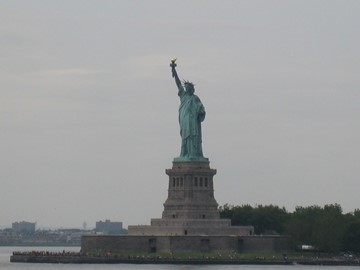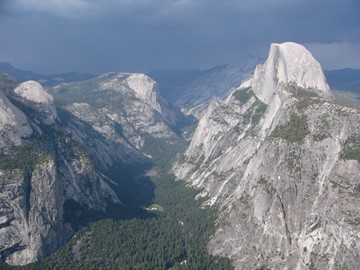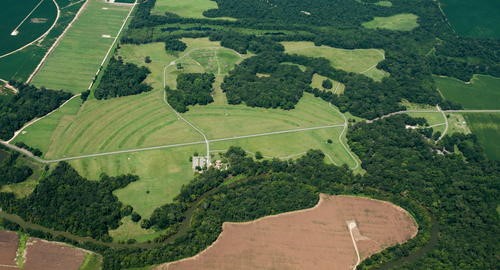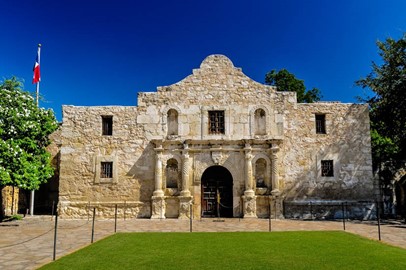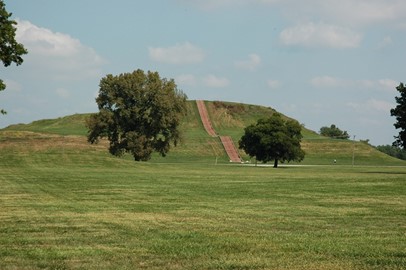region :: europe and north america
Statue of Liberty
The Statue of Liberty, a UNESCO World Heritage site in the United States, is an iconic symbol of freedom and democracy. Gifted by France in 1886, this colossal copper statue depicts Libertas, the Roman goddess of liberty, holding a torch and a tablet inscribed with the date of American independence. Designed by French sculptor Frédéric Auguste Bartholdi and with its internal structure engineered by Gustave Eiffel, it has welcomed millions of immigrants and visitors, embodying the nation's ideals of opportun... Read More
Yosemite
Yosemite National Park, a UNESCO World Heritage site in the United States, is renowned for its stunning granite cliffs, cascading waterfalls, and diverse ecosystems. This iconic park features breathtaking landmarks like El Capitan and Half Dome, attracting millions of visitors annually for hiking, climbing, and nature exploration. Its rich biodiversity includes giant sequoia groves and abundant wildlife, making it a globally celebrated natural treasure.
Chaco Culture
Chaco Culture, a UNESCO World Heritage site in the United States, preserves an ancient Puebloan civilization that thrived between 850 and 1250 AD. This remarkable archaeological site showcases monumental public and ceremonial buildings, including massive stone structures known as 'great houses,' which demonstrate advanced architectural and astronomical knowledge. The site's intricate road systems and cultural artifacts highlight its significance as a major center of ancestral Puebloan society, offering valu... Read More
Hawaii Volcanoes
Hawaii Volcanoes National Park, a UNESCO World Heritage site in the United States, showcases one of the planet's most active volcanic landscapes, featuring two renowned volcanoes, Kilauea and Mauna Loa. Established in 1916, this national park protects diverse ecosystems, from lush rainforests to stark lava fields, while preserving significant Hawaiian cultural sites and traditions tied to the volcanic terrain. Visitors can explore dramatic craters, steaming vents, and rare geological formations, making it a... Read More
Taos Pueblo
Taos Pueblo, a UNESCO World Heritage site in the United States, is an ancient Native American community renowned for its multi-storied adobe buildings, which have been continuously inhabited for over 1,000 years. This living village, constructed from sun-dried mud bricks, exemplifies the architectural ingenuity and cultural traditions of the Pueblo people. Its historical significance and well-preserved structures make it a remarkable testament to indigenous heritage and resilience.
Carlsbad Caverns
Carlsbad Caverns National Park, a UNESCO World Heritage Site in the USA, is renowned for its vast underground limestone chambers, formed millions of years ago by acidic water eroding the rock. The park features over 100 caves, with the most famous being the Carlsbad Cavern, home to stunning stalactites, stalagmites, and other geological formations illuminated for visitors. It also hosts a massive colony of Brazilian free-tailed bats, whose nightly exodus during warmer months draws spectators. This natural w... Read More
Papahanaumokuakea
Papahānaumokuākea is a UNESCO World Heritage site northwest of the main Hawaiian Archipelago, recognized for its cultural and natural significance. It encompasses a vast region of islands and atolls in the Pacific Ocean, serving as a critical habitat for numerous endangered species, including seabirds, turtles, and monk seals. The site also holds deep cultural importance to Native Hawaiians, featuring ancient archaeological sites and embodying traditional ecological knowledge. Its remote location and protec... Read More
Poverty Point
The Monumental Earthworks of Poverty Point, a UNESCO World Heritage Site in the USA, is a prehistoric complex built by a hunter-fisher-gatherer society between 1700 and 1100 B.C.E. It features five mounds, six concentric semi-elliptical ridges, and a central plaza, representing a remarkable feat of earthen construction unmatched in North America for over 2,000 years. This site, created without modern tools or agriculture, highlights the sophistication of its builders and their extensive trade network across... Read More
San Antonio Missions
The San Antonio Missions, a UNESCO World Heritage site in the United States, comprise a group of five colonial-era missions established by Spanish Catholic missionaries in the 18th century. These missions, including the famous Alamo, were built to spread Christianity and Spanish culture among the indigenous populations, featuring distinctive stone churches, living quarters, and agricultural systems. Today, they stand as well-preserved historical landmarks, offering insight into the region’s colonial past an... Read More
Monticello
Monticello and the University of Virginia, a UNESCO World Heritage site in the United States, represent exceptional examples of neoclassical architecture designed by Thomas Jefferson, the third U.S. President. Monticello, Jefferson’s self-designed home, showcases his innovative ideas with features like the octagonal dome and sustainable estate planning. The University of Virginia, founded by Jefferson in 1819, integrates a unique “academical village” layout, blending student living and learning spaces with ... Read More
Cahokia Mounds
Cahokia Mounds, a UNESCO World Heritage Site in the United States, is a remarkable pre-Columbian Native American city that flourished between 1050 and 1350 CE. At its peak, it was one of the largest urban centers north of Mexico, featuring over 120 earthen mounds, including the impressive Monks Mound, the largest prehistoric earthwork in the Americas. The site served as a hub for trade, religion, and culture, with evidence of a sophisticated society that included planned settlements, agricultural innovation... Read More
La Fortaleza and San Juan
La Fortaleza and San Juan, a UNESCO World Heritage site in the Puerto Rico, is a historic fortified complex and colonial city renowned for its well-preserved Spanish architecture and military engineering. Established in the 16th century, it includes La Fortaleza, the governor’s residence, and formidable structures like Castillo San Felipe del Morro, reflecting its strategic role in the Caribbean. The site showcases over 500 years of history, blending cultural influences and offering a glimpse into colonial ... Read More
Dresden Elbe Valley
The Dresden Elbe Valley, a UNESCO World Heritage site in Germany, is renowned for its stunning cultural landscape, blending natural beauty with architectural splendor. This picturesque valley features historic landmarks like the Dresden Castle, Zwinger Palace, and Semper Opera House, set against the serene Elbe River and lush vineyards. Recognized for its universal value, it showcases centuries of artistic and urban development, making it a significant testament to European heritage.
Liverpool – Maritime Mercantile City
Liverpool – Maritime Mercantile City, a UNESCO World Heritage site in the UK, is renowned for its historic waterfront, showcasing a rich legacy of trade and cultural exchange. Its iconic docks, warehouses, and merchant buildings reflect its pivotal role as a global port during the 18th and 19th centuries. The site includes notable landmarks like the Royal Liver Building and the Albert Dock, blending architectural grandeur with historical significance. This designation highlights its contribution to maritime... Read More
